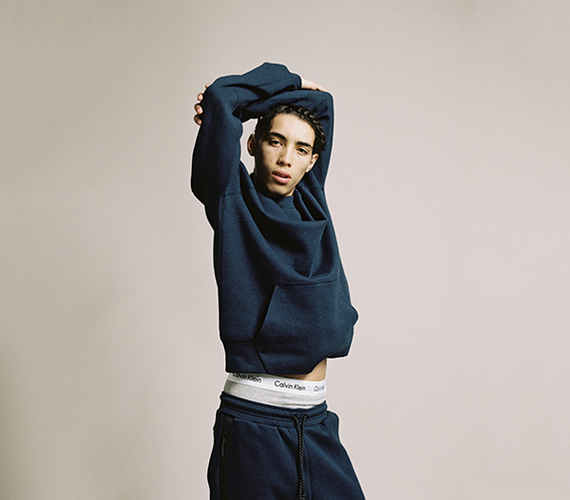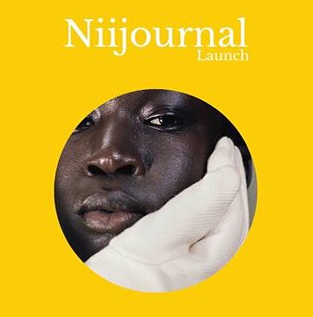I remember when Wolfgang Tillmans first appeared on the photo scene. It was the 90's. I would be walking around East London and recognising his locations, but also there was something else; the way he lived and the people he shared lives with, touched my photo homing instinct. Then there was Rankin, who edged into my consciousness, like everyone else's, with bravado and sex, throwing gloss into the mind's eye, after years of grunge. I wondered how the experience of his models compared to my own, after I once had the chance to model for him. Something to tell the grandkids about. Opposingly, Jemima Stehli and Sam Taylor Johnson met my feminist inclinations.
Sometimes the reason an image resonates never becomes clear, and you keep reconnecting with it, like a dream that you are trying to understand.
Then there are images that draw us in, over and above aesthetics. I wondered how the new generation of photographers, those with a timely political agenda, make a place for themselves at the visual pulpit?
Campbell Addy, a recent Central St Martins graduate, uses fashion photography to give us an insight into his London life.

Photo Campbell Addy Urban Outfitters
He uses his camera as a tool to politicize his personal experience of living in Britain. His work celebrates fashion and the cultures that fuel it. Mix that with humour and confident styling from his collaborator PC Williams, Associate Lecturer at CSM and stylist for the likes of Nike and Sony Music, Addy is ripe to move into publishing. May 10th sees the launch of his new arts, culture and fashion magazine, created to educate about issues surrounding people of colour. Nii Journal.

Photo Campbell Addy Nii Journal
I asked Campbell why he is taking on the role of educating his readers on issues identity.
Tell me about your intentions for the journal, and about why you have taken the leap into publishing.
I intend for Nii to be a platform of exploration for people like me. I'd like to say I'm am eclectic mix of everything and everyone I've ever come across and I think Niijournal reflects that. Subvert the stereotypical views of certain people and create new representations for us all. Print isn't dead, you just need to create something worth purchasing.
What was your experience pre CSM, as a consumer of fashion magazines, and what inspired you intellectually and visually in the arts?
I love art galleries, every summer from a very young age I would travel up to London either alone or with school to visit exhibitions. Alongside galleries, films truly inspired me. It gave a glimpse into the outside world.
You shoot in Ghana, London and New York, how differently do you approach working in these places, if at all?
Working in Ghana was very different than New York and of course my hometown of London. In Ghana, I had to try and speak in the mother tongue, which immediately built up walls with unknowing locals. I had to change my entire approach, most times I would stay in an area for an entire day to meet the people, gain trust and see what was going on in area before capturing it. Africa has been photographed in many ways. I wanted my images to show the beauty of Ghana, so approaching it in a more delicate manner was imperative.
Working in New York and London is very similar in terms of how you go about it, however I felt a sense of fearlessness in New York as no one knows who I am, so I had the confidence to reach out to publications such as Hello Mr.
You hooked up with Annie Lebovitz, how did that come about?
I met Annie Leibovitz in London via Central Saint Martins. She was showing her exhibition WOMEN: New Portraits, and a select few of us were lucky enough to meet and speak with her.
Did she offer any advice?
Yes, the one piece of advice that I've been thinking about is to look at my body of work. She stressed how important it is to see your work as a whole.
Regarding content, we are in politically inspired times. Do you think we are becoming desensitized to these messages, because there is such a flux in conversation?
No, I think it's the opposite. We need more, the more people that see it, the more people that are educated on issues that are affecting mankind.
I regularly hear talk of empowerment motives from fashion brands. Who do you think has an authentic voice in fashion, brands that are really making a difference?
At this present time the brands that stands out to me would be Charles Jeffrey and Telfar.
In publishing, I have always been a great fan of Arena Homme Plus. I like that they're pushing boundaries and still keeping the sense of creativity.
How have you found working commercially, in terms of creative freedom?
I've been very lucky as the commercial work I've been hired for have mostly been on my terms. When I was asked to shoot the Urban Outfitters campaign, they explicitly said that they want it to just like some shoots I have been creating.
Costs for print publishing will be a challenge, can you tell us a bit about funding?
The hardest thing has been funding. I've been saving for the better part of a year, working on the most obscure paid shoots and taking part time jobs to raise funds. Besides funding, the personal challenges are hard, as is life, so there's been many times I've questioned whether I should do this but I'm reminded by my friends that as long as I believe in it, then that's all that matters.
Full version of this interview is available on www.loumensahstudio.com